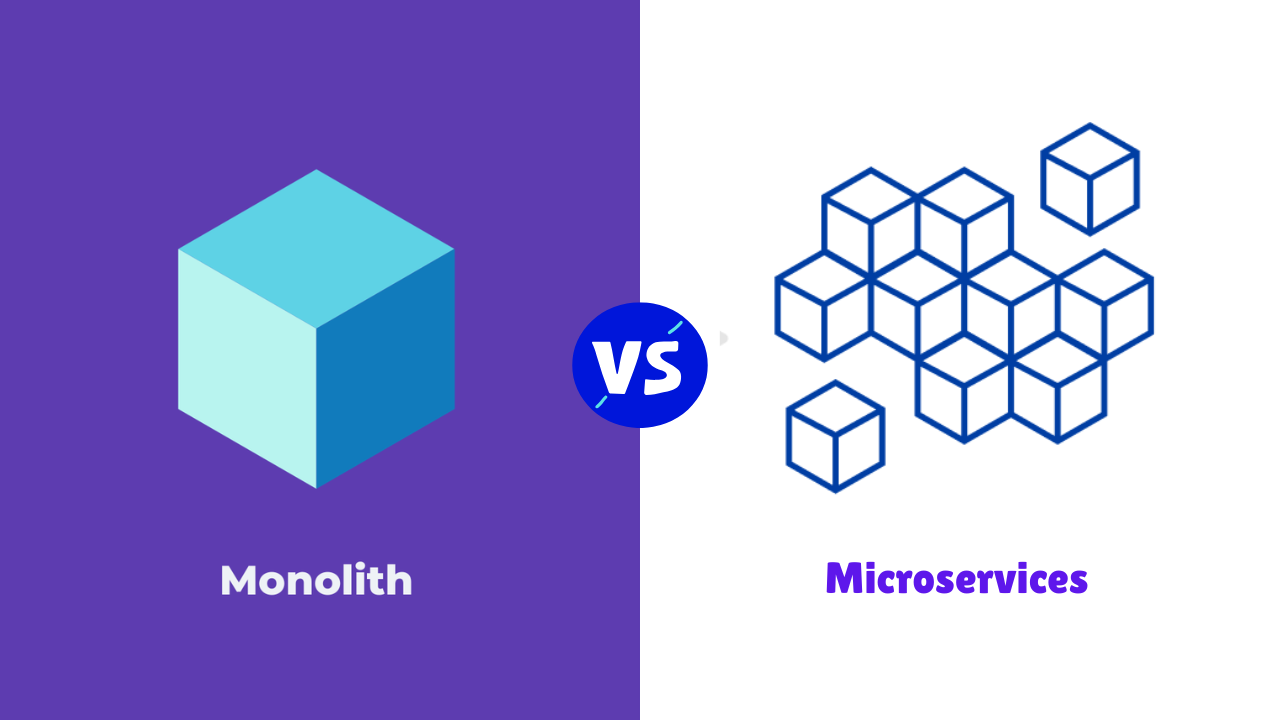Microservices break an application into smaller, independent services, while monolithic architecture builds everything as one unit. Each has its strengths, but the right choice depends on your project goals, team expertise, and scalability needs.
This post explains both architectures, their pros and cons, and the factors to consider before choosing one. We’ll also share examples to help you make the best decision for your business.
What is Monolithic Architecture?
A monolithic architecture is a single unified codebase where all components of an application—frontend, backend, and database—are tightly integrated.
Advantages of Monolithic Architecture
- Simple Development and Deployment – Developers can manage the entire application in one place, making it easier to test and deploy.
- Lower Initial Costs – Requires fewer resources, making it ideal for startups and small teams.
- Easier Debugging – Debugging is simpler because all components are in one system.
- Faster Development for Small Projects – A unified codebase speeds up development for smaller applications.
Disadvantages of Monolithic Architecture
- Scalability Issues – Scaling specific components requires scaling the entire application, leading to inefficiencies.
- Limited Flexibility – Changes in one part of the application can affect the entire system, increasing downtime risk.
- Slower Deployment for Large Projects – As the application grows, deployment becomes slower and more complex.
- Technology Limitations – All components must use the same technology stack, reducing flexibility.
What is Microservices Architecture?
A microservices architecture divides an application into smaller, independent services, each handling a specific function. These services communicate through APIs and can be developed, deployed, and scaled independently.
Advantages of Microservices Architecture
- Scalability – Each service can scale independently, making it ideal for large applications.
- Flexibility – Different services can use different programming languages, frameworks, or databases.
- Faster Updates – Teams can update specific services without affecting the entire application.
- Improved Fault Tolerance – Failure in one service doesn’t impact others, improving reliability.
- Better Team Collaboration – Teams can work independently on different services, speeding up development.
Disadvantages of Microservices Architecture
- Higher Complexity – Managing multiple services requires robust orchestration tools like Kubernetes.
- Increased Costs – Requires more infrastructure and resources to handle deployment, monitoring, and communication.
- Data Management Challenges – Maintaining data consistency across services can be complex.
- Steeper Learning Curve – Teams need expertise in managing distributed systems and DevOps practices.
Key Differences Between Monolithic and Microservices Architectures
| Feature | Monolithic Architecture | Microservices Architecture |
|---|---|---|
| Scalability | Difficult to scale individual components. | Scalable as each service can grow independently. |
| Deployment | Single deployment for the entire application. | Continuous deployment of individual services. |
| Technology Stack | Uses a single technology stack. | Allows multiple technologies for different services. |
| Fault Tolerance | A single point of failure can crash the whole system. | Failures in one service don’t affect others. |
| Development Speed | Faster for small teams and projects. | Faster for larger teams working on separate features. |
| Maintenance | Simple for small projects but challenging as it grows. | Easier to maintain and upgrade specific services. |
How to Choose the Right Architecture?
1. Project Size and Complexity
- Monolithic: Suitable for small and medium-sized projects with limited features.
- Microservices: Ideal for large, complex applications with frequent updates.
2. Team Expertise
- Monolithic: Works well for smaller teams with general development skills.
- Microservices: Best for teams experienced in DevOps, containerization, and distributed systems.
3. Scalability Needs
- Monolithic: Limited scalability, suitable for stable applications.
- Microservices: Scalable for applications expecting high traffic or growth.
4. Budget and Resources
- Monolithic: More cost-effective initially but may incur costs during scaling.
- Microservices: Higher upfront costs due to infrastructure needs but better for long-term growth.
Real-World Examples
- Netflix: Transitioned from a monolithic to a microservices architecture to handle millions of users and improve uptime.
- Amazon: Uses microservices to enable independent scaling and faster feature deployment.
- Small Startups: Often start with a monolithic architecture to save costs and later shift to microservices as they scale.
Conclusion
Choosing between microservices and monolithic architecture depends on your project’s size, complexity, and scalability needs.
- Go with monolithic architecture if you’re building a small or medium application with limited resources.
- Opt for microservices if you need scalability, flexibility, and faster updates for a growing application.
Evaluate your current requirements and future goals before making a decision. If you’re unsure, consulting with a tech service company can help you plan a scalable and cost-effective solution.
FAQs
1. Which architecture is better for startups?
Startups often prefer monolithic architecture due to lower initial costs and simplicity. However, microservices may be better if scalability is a priority.
2. Can a monolithic application be converted to microservices later?
Yes, many companies transition from monolithic to microservices as they grow. It requires careful planning and testing to avoid disruptions.
3. What tools are used for microservices management?
Popular tools include Kubernetes, Docker, AWS Lambda, and API Gateway for orchestration and deployment.
4. Are microservices more expensive than monolithic architecture?
Initially, yes. Microservices require more infrastructure and expertise, but they offer cost savings in the long run due to scalability and easier maintenance.
5. Is monolithic architecture outdated?
No, it’s still widely used for smaller applications and teams. Many successful businesses continue to rely on monolithic systems.
